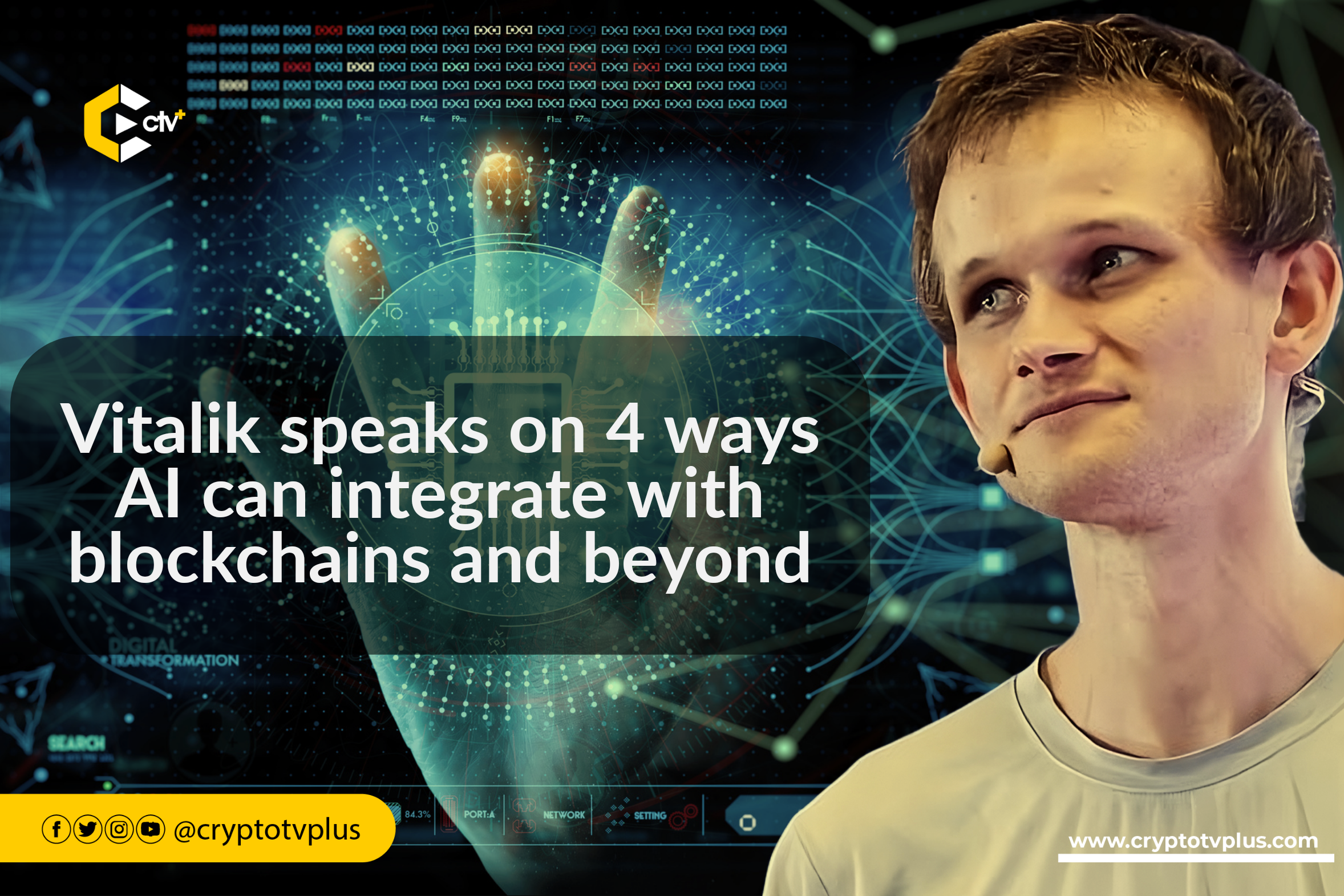News
Vitalik speaks on 4 ways AI can integrate with blockchains and beyond

In the past year, the convergence of crypto and artificial intelligence (AI) has sparked curiosity, with enthusiasts seeking meaningful intersections between the two dominant technological trends of the past decade.
About this, Vitalik Buterin, co-founder of Ethereum, said that while superficial connections are evident, such as crypto decentralization balancing AI centralization, the transparency brought by crypto to the opaque nature of AI-specific applications is limited.
However, the landscape is evolving. The advent of powerful modern LLMs (Large Language Models) in AI and advanced crypto solutions like blockchain scaling, ZKPs (Zero-Knowledge Proofs), FHE (Fully Homomorphic Encryption), and MPC (Multi-Party Computation) is reshaping possibilities.
AI as an integral part of blockchain projects
He elaborated on the four main categories, highlighting potential synergies and challenges. First, he wrote about AI as an integral part of crypto projects. This involves artificial intelligence (AI) engaging in activities where a protocol influenced by human inputs determines the incentives. He noted that this concept has been around for almost a decade, especially in decentralized exchanges.
He highlighted situations where AIs could evaluate social media posts, predict stock prices, verify online identities, assess work submissions, and spot scams. This method, called “info defense,” seeks to distinguish between true and false information without needing a central authority.
The use of AI in systems guided by on-chain rewards or penalties influenced by human inputs is an intriguing area to explore. Recent progress in blockchain scaling makes these small-scale applications feasible on-chain.
AI as an interface for blockchain projects
Vitalik also noted that there is a potential market where AI is used for user-friendly software that safeguards users online. For instance, tools like Metamask’s scam detection and Rabby Wallet’s simulation feature already exist.
These tools could be enhanced with AI to provide more detailed explanations about the apps users are interacting with, the implications of complex transactions, and the authenticity of tokens.
While some projects are moving in this direction, a fully AI-driven interface might be too risky due to potential errors. However, combining AI with a traditional interface is becoming increasingly feasible.
However, he added that one notable risk in this opportunity is adversarial machine learning, where users with access to an AI assistant might expose it to potential exploitation by bad actors.
Using AI as the rules behind blockchain projects
His third mention is using AI as the core of the rules behind blockchain-based projects. This involves integrating AIs into smart contracts, or DAOs, to enforce subjective decisions.
He added that while there is massive excitement around the concept of “AI judges,” it’s not all rosy as it poses challenges, particularly in addressing adversarial machine learning attacks.
He further described the challenge by saying that if the AI model is closed, its inner workings cannot be verified, making it no better than a centralized application.
Conversely, if the AI model is open, attackers can download and simulate it locally, optimizing attacks to deceive the model, which they can then deploy on the live network.
Furthermore, he revealed that trying to use advanced cryptographic techniques like zero-knowledge proofs to address these challenges is not 100% safe for two reasons.
Integrating AI within cryptographic frameworks is less efficient than transparent methods, potentially posing computational challenges due to the computational intensity of AI.
Additionally, even if the model’s internal workings are not known, attackers can still optimize attacks. Excessive secrecy in the model’s design makes it easier for those handling training data to corrupt the model through poisoning attacks. In general, he said that the difficulty lies in balancing openness for security with the risk of exploitation.
Using AI as an objective tool beyond blockchain projects
Vitalik said that AI can also be used to create useful projects that go beyond blockchain-based products. Using an example of what the Near Blockchain team is working on, the co-founder noted that if the methods for developing a scalable decentralized private AI, with its operations kept secret, prove effective, this approach could extend beyond blockchains.
In a blog post, the CEO of NEAR Blockchain expressed concerns about the risks associated with generative AI, highlighting the potential for personal control and manipulation. To counteract this, NEAR aims to champion digital self-sovereignty, granting users control over their information.
The envisioned approach involves both user-owned AI and community-owned AI models, overseen by members to meet collective needs. NEAR underscores the importance of economic and technological opportunities, open-source software, chain abstraction, innovative value in applications, on-edge AI models, and community-owned models as key elements for achieving this vision of self-governance.
For Vitalik, creating “trustworthy black-box AIs” using a combination of blockchains and MPC can address concerns of bias or cheating in various applications. This approach aligns with the desire for democratic governance of crucial AIs, and cryptographic and blockchain techniques could facilitate that.
To keep AI safe, it’s important to make decentralized AIs with a special feature that can stop the AI when needed. This helps manage and prevent any attempts to use the AI for harmful reasons.
Also, it’s good to note that using rewards in cryptocurrency to improve AI doesn’t always mean completely hiding it. Approaches like BitTensor find a middle way, providing a balance.
Vitalik explained that the evolving landscape of crypto and AI interactions presents exciting possibilities and challenges. Immediate potential lies in applications where AIs enhance existing mechanisms, while caution is required in more ambitious ventures involving AIs as integral parts of decentralized systems.
Read also; Celsius Emerges from Bankruptcy, Initiates $3B Return to Creditors

























1 Comment